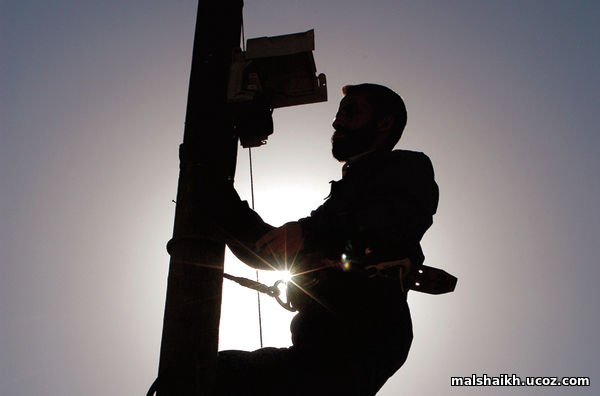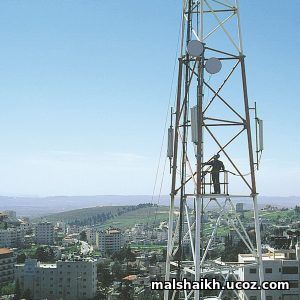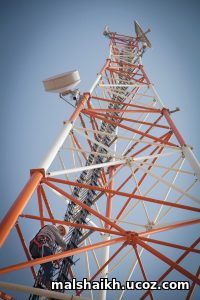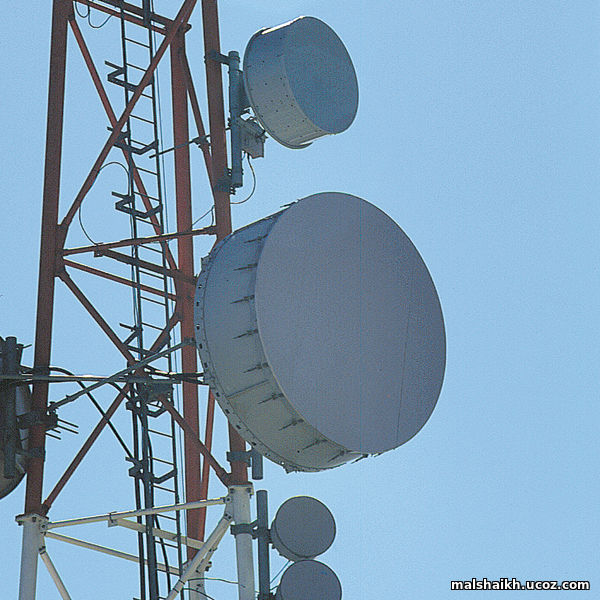
Photo courtesy of PalTel.
The development of the Palestinian telecommunication and information technology sector, like everything else in Palestine, is subject to the asymmetrical power relationship between Israel and the Palestinian National Authority (PNA). This relation is manifested in the Oslo Accords and the associated telecommunications and postal services agreements and their annexes, namely Annex III, which deals with telecommunication technology. The telecommunication agreement, while acknowledging the Palestinian rights to build and operate their own telecommunication infrastructure, gives the Israeli side total control over the international telecommunication gateways, the electromagnetic field (frequency spectrum), the telephone numbering plan, the access to areas labeled Area C, and the importation of equipment – all under the pretext of being necessary for security reasons.
After 1967, the Israeli military authority managed the telephone networks in the West Bank and Gaza. Jerusalem was declared to be part of the state of Israel and thus management and ownership was handed to the Israeli Telecommunication Company, Bezeq, the national monopoly. Much of the technical work in Gaza and the West Bank was outsourced to Bezeq, and backbone and international gateways were in the hands of Bezeq.

Photo courtesy of PalTel.
In 1994, the total volume of the network capacity in the West Bank and the Gaza Strip (excluding Jerusalem) was estimated at around 80,000 telephone lines. It is worth mentioning that before 1994, the Israeli occupation forces imposed tough legal and military restrictions on infrastructure use. The Palestinian public, for example, was not allowed the use of facsimile technology or data transmission technology (Internet). In 1995, the Israeli occupation authority handed the newly established PNA administration 83,000 functioning telephone lines in the Gaza Strip and the West Bank, excluding East Jerusalem, which was annexed to Israel.
In 1995, with the signing of the Oslo Accords, Palestinians were promised direct control over their domestic and international telecommunication network. The newly established PNA was starved for cash and looking for immediate investment in the infrastructure to meet the population’s high expectations after the signing of the Palestinian-Israeli accords. In 1996, it awarded the Palestine Telecommunications Company (Paltel) a license to build, operate, and own all landlines, cellular networks, data communications, paging services, and public telephones. However, the telecommunication agreement and the establishment of Paltel did not put an end to Palestinian reliance on Israel for domestic and international connections. Whereas Article 36B(4) of Annex III of the 1995 Interim Agreement outlines the Telecommunication Agreement and states that the Palestinian side has the right to build and operate a separate and independent telecommunication system, the agreement simultaneously introduces conditions that make the building of an independent system impossible: “The Palestinians can only adopt their standards and import equipment when the Palestinian telecommunication network is fully independent from Israel.”* To date, the Palestinian network is not truly independent because the Israeli government legitimizes imposing its restrictions by claiming that it is abiding by Article 36 and the associated annexes and, in the process, keeps the Palestinian telecommunications network dependent on Israeli networks.

Photo courtesy of Wataniya Mobile.
In its drive to increase productivity, Paltel has kept up with technological development and increased its profits, managing to reduce cost through outsourcing many of its services. In 1999, Israel granted the PNA, and thus Paltel, frequencies to launch Jawwal, the first Palestinian mobile telephone service in Gaza and the West Bank. The second Palestinian mobile operator Wataynia was granted its license in 2006, but actual operation started in 2008 after Israel agreed to free frequencies for its operation only in the West Bank. Both mobile operators provide second-generation (2G) services; the Palestinian operators cannot provide 3G services in the West Bank and Gaza due to Israeli restrictions on frequency allocation. In 2009, the Palestinian Ministry of Telecommunication and Information Technology (MTIT) started to initiate fixed-line liberalization by separating the Internet services from line access, a process called Bit Stream Access (BSA). For the first time, Internet Services Providers (ISPs) were able to compete in the Internet market, while Paltel services in the area of data remained confined to providing line of access. Today, about ten companies compete to provide Internet services in the Palestinian territories. The 2006 internal division between the West Bank and the Gaza Strip has had a negative impact on the sector; two ISP licensing and taxation procedures have been created in the West Bank and in Gaza, respectively.
The total control over the Palestinian frequency spectrum given to Israel in the above-mentioned Telecommunication Agreement carried the condition that Israel release spectrum to the Palestinian Authority when needed and within one month of the request. However, Israel has turned a deaf ear to repeated Palestinian requests for additional frequencies, whether for telecommunication, radio, or TV. Frequencies were released for the official Palestinian TV and radio stations; one earth station for Palestine satellite TV upload has been allowed. Currently there are more than 100 radio and TV stations that broadcast from the West Bank and the Gaza Strip, the former using the FM frequency range and the latter stations using UHF frequency range. Israel considers these stations to be broadcasting illegally and contrary to the signed agreement (Article 36 of Annex III). Frequently, the Israeli armed forces raid stations’ premises and confiscate their equipment, accusing them of interfering with the communication of Israeli air aviation control.
Israel’s refusal to grant Palestinian access to the radio communication spectrum wreaks havoc on Palestinian mobile telecommunication. Palestinians have no access to 3G, 4G, LTE, or future spectrum bands, a situation that also limits the ability of Palestinian operators to deliver mobile data services and widespread mobile access to the Internet. Furthermore, and contrary to the signed agreements, Israeli operators cover most of the West Bank and Gaza Strip without licenses from the Palestinian Authority or paying fees or taxes or contributing any value-added services to their Palestinian customers. Some of the Israeli operators use confiscated privately owned Palestinian land to erect their towers. In the meantime, Palestinian operators are not allowed to build infrastructure in Area C (that today constitutes more than 60 percent of the West Bank area), which leaves their Palestinian residents with no alternative but to use the available Israeli service providers.
Despite the Israeli siege of the sector, unfair competition from Israeli operators, and the restriction on infrastructure development in Area C, Paltel operates 400,000 fixed lines in the West Bank and Gaza. As for the 2G services, Jawwal provides more than 2 million lines, and its competitor Watanyia has 700,000 lines in the West Bank alone. Currently, Internet penetration within Palestinian society is estimated to be around 60 percent, and services were provided mainly by Paltel subsidiary Hadara until 2010, when a dozen ISPs were established to share the market with Hadara.
Recently, the Israeli military administration agreed to release 2G frequencies for Watanyia to use in Gaza and to release frequencies for both Jawwal and Watanyia to provide 3G services in both the West Bank and Gaza. It remains to be seen if the Israeli military authority will honor this promise. It’s expected that the new services will be available to the Palestinian public in mid-2017.
Similar to any growing economy, the development of the Palestinian telecommunications industry leads to the need to use advanced IT services. Despite the severe Israeli restrictions on technology import and export, the information technology industry in the Palestinian territory has witnessed rapid growth since 1994; the sector currently employs around 8,500 individuals working in 600 companies. It is estimated that the sector has a total volume of production of around US$ 900 million, which is 6.1 percent of the Palestinian GDP, and is still growing rapidly, with an annual increase of around 10 percent.

Photo courtesy of PalTel.
Only after the establishment of the PNA was the Palestinian IT industry able to emerge. After 1995, the newly established PNA administration and the private sector invested in hardware and software. The development of enterprise-resource-planning (ERP) software packages (financial and accounting packages) boomed, and a number of independent ISPs emerged. All 13 universities in the West Bank and Gaza now have ICT departments, with a total enrollment of over 8,000 students, graduating 2,500 students annually to meet the demand for a qualified workforce able to drive the new ICT industry. Active expatriate Palestinian ICT professionals have played a significant role in developing the sector; a few businesses were started and are still managed by Palestinians who live in the United States and Europe. In some cases, Palestinian-owned ICT businesses outside Palestine are outsourcing software development and the research-and-development side of their businesses to Palestinian companies in the West Bank and Gaza. Access to the Palestinian market and free movement of people and goods, such as computer hardware, is hindered by Israel’s strict control of borders, especially in and out of Gaza.
Palestine is a young society; youth comprise 30 percent of the total population, 38.1 percent of whom are adolescents (15–19 years old) and 61.9 percent are youth (20–29 years old). With human capital regarded as the most important input for IT development, modernizing the education system is vital to the creation of a suitable and sustainable enabling environment.
However, recent studies have revealed that the private sector is not able to absorb a sufficient number of ICT graduates; the unemployment rate among computer science graduates and related disciplines is estimated to be 45.8 percent in Gaza and 17.6 percent in the West Bank.
The Palestinian education system gives students minimal interaction with technology and does not stimulate problem-solving skills or innovative thinking. Various in-depth analyses of the Palestinian higher education system have revealed serious flaws in the three main components of the education process: assessment methods, curriculum design, and teaching methods. As such, the skills of Palestinian graduates currently fall below the skill requirements of local companies. Moreover, the high cost and long hours required to train new graduates discourage local companies from investing in capacity building as they cannot expect a quick return on their investment, especially when considering the volatile political and economic environment. The international community, governments, NGOs, and big international IT corporations such as Cisco and Google have invested in training Palestinian graduates and have in some cases provided venture capital for young entrepreneurs to start their own software businesses. Others have outsourced programming and services to Palestinian IT businesses.
For the IT industry to seriously advance, move forward, and provide desperately needed jobs for thousands of unemployed young graduates, 3G and 4G frequencies have to be released by Israel, and the PNA needs to provide an enabling environment, take the lead in building the e-Government infrastructure, and move this matter beyond the political division between the West Bank and Gaza.
Author: Mashhour AbuDaka
|